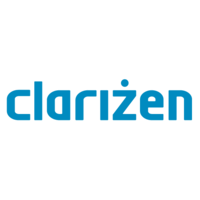Because IT touches the entire business, the projects can be large and complex. Despite the large projects they’re facing, only 23 percent of organizations use a project management tool, leaving over 50 percent of teams without the key performance indicators they need to effectively evaluate projects and processes. IT project management software helps companies stay on track with their project goals, identify bottlenecks quickly, and improve their project procedures overall.
Choosing IT Project Management Software
- What is IT Project Management
- The benefits of of IT Project Management Software
- Compare the top IT Project Management Tools
- Jira
- Basecamp
- Trello
- Asana
- Clarizen
- Wrike
- Monday
- How to choose IT Project Management Software
What Is IT Project Management?
IT project management is the process of planning, organizing, and monitoring a project to achieve the goals the stakeholders set. It usually involves breaking the project down into smaller tasks and assigning those to the appropriate team members. Then, using project management software, the project manager can track the progress each employee is making on their respective roles and quickly identify bottlenecks.
IT project management differs from traditional project management in that IT touches a larger portion of the business, meaning project managers have to be more cognizant of integrations, dependencies, and the addition of new technologies. Typically, the scope of the projects is also much larger because of the number of people involved in the change.
The Benefits of IT Project Management Software
IT project management software simplifies projects and offers several benefits to organizations that use it. Here are some of the advantages companies can expect.
Improved remote collaboration
With cloud-based IT project management tools, employees can share documents and files, comment on tasks, and work together to solve problems, even when they aren’t in the same office. Tagging capabilities allow stakeholders to pull in the right people and get their input quickly to keep the project moving. It also keeps all project communications in one easily accessible spot, so everyone has the same information.
Also read: Eight Best Practices for Securing Long-Term Remote Work
Better budget tracking
With project management software, project managers have an easier time tracking all of the resources they’re using. Gantt charts display which tasks are assigned to which employees or contractors and how they’re progressing against the expected timeline. This helps project managers get more accurate cost estimates and make necessary adjustments to keep the project under budget.
Effective delegation
Task assignments allow project managers to effectively delegate work while still being able to keep a close eye on its completion. Project management tools provide real-time updates and can send notifications to key stakeholders when a task runs past its deadline. If necessary, the project manager can then step in and find out what’s holding the task up and help the team resolve any issues.
Clearer workflows
Gantt charts and Kanban boards provide clearer workflows because every member of the team can see the tasks that make up the project and any dependencies that are in place. These charts also tell employees exactly what they’re responsible for and when it’s due. Project management tools also include visual workflow builders, allowing project managers to build the tasks they need in a way that makes sense for their team.
Reduction in bottlenecks
With clearer workflows, project managers can quickly identify delays in the project and keep the work from piling up. Additionally, project management software removes the need for a bunch of different meetings, which could delay the project and keep team members from their other responsibilities.
Compare the Top IT Project Management Tools
Jira
Jira is best for software development teams that use the Agile method of project management. It offers customizable Scrum and Kanban boards to provide full project visibility and improve production times. Out-of-the-box reports provide real-time information and actionable insights on sprint performance without requiring much initial formatting. Jira also offers an automation engine that automates repetitive tasks to take work off of your developers’ plates and improve efficiency and accuracy.

Pros
- Very user-friendly with an intuitive UI
- Large library of APIs and integrations
- Roadmaps allow project managers to see all of the milestones in one place
Cons
- Licensing costs are fairly high, especially considering the number of open source tools on the market
- Some organizations face long load times
Basecamp
Basecamp is cloud-based team collaboration software with a flat licensing fee regardless of the number of users, making it perfect for growing teams. While it doesn’t offer Gantt charts or similar boards, it does help teams track tasks and monitor deadlines. Stakeholders can create projects for each assignment, add the necessary team members, and create and assign relevant tasks. Campfire chats let everyone assigned to the project discuss it without requiring extra meetings. Plus, Basecamp offers a BCC email address, keeping all important communications in one centralized location.

Pros
- Flat monthly fee simplifies budgeting
- Prioritizes the most important features to keep the workspace from becoming cluttered
- Can easily add clients to projects for no extra cost and without giving them visibility into other customers’ projects
Cons
- Have to pay yearly instead of monthly to get more storage space
- Doesn’t offer the same level of insight as true project management applications
Trello
Trello is a Kanban board application that allows users to build custom workflows and move task cards through the different stages. No-code automation is easy to add for organizations without developer input and takes some of the more tedious work off of their teams’ plates. Plus, users can integrate Trello with other tools they use, like Slack, Google Drive, and Microsoft Teams. The cards are easy to fill out and walk team members through the information they need to include. There’s a free plan for small teams, but higher tiers offer more features and are priced per user.

Pros
- Offers both desktop and mobile apps along with a browser option
- Quick to implement and easy to use
- Multiple team members can work from one board
Cons
- Advanced features like time tracking require add-ons
- Can’t be used alone to manage large, complex projects
Also read: Trello vs Slack: Project Management Comparison
Asana
Asana offers customizable work plans in its project management software, providing options for Kanban boards, to-do lists, timelines, and calendars. Teams can choose the option that best fits their project and use tasks and sub-tasks to break the work up into manageable pieces. Custom fields allow organizations to track any metric they need to. There’s even an option to set start dates for tasks to help employees avoid procrastinating on their responsibilities. Organizations can also set up dependencies in Asana to quickly identify which tasks are ready to start and which are waiting on something else.

Pros
- Easy to track progress percentage for the project
- Simple to use and intuitive design
- Communication within tasks prevents information getting lost in emails
Cons
- No features for budget or resource tracking
- Paid versions are priced slightly higher than competitors
Clarizen
Clarizen project management software offers a customizable UI that includes project workflows to automate simple tasks. Remote teams can easily collaborate using the centralized proofing and approval process along with file sharing features. Plus, the Clarizen Bot for Microsoft Teams and Slack makes it easy for them to discuss projects where they already collaborate. Resource and budget management dashboards display how the project is progressing against expectations and help organizations make more informed decisions.

Pros
- User friendly with a robust set of features
- Organizations can manage tasks based on priority
- Allows companies to build their own rules and business processes
Cons
- The Gantt chart feature could use some improvement
- The price per user is very high, especially for the unlimited plan
Wrike
Wrike is a highly customizable project management tool that allows organizations to configure their dashboards, workflows, and request forms in a way that works for them. It even includes automated approval systems and visual proofing to reduce delays and keep the project moving along. It works well for small teams but is also scalable, so growing businesses won’t have to learn a new system. The new Work Intelligence AI provides predictions on project risk to help organizations make smarter decisions.

Pros
- Provides a lot of the visibility leadership needs to make good decisions
- Intuitive and easy-to-use platform
- Offers flexibility in managing and prioritizing tasks and sub-tasks
Cons
- Doesn’t include some of the more advanced features like capacity planning or meeting management
- The archiving system can be difficult to navigate
Monday
Monday project management software is easy to set up, and it includes a variety of customizable templates for project plans. It allows teams to easily automate repetitive tasks, so they can avoid human errors and focus on more complicated matters. There are also different work view options, including Kanban boards, timelines, and calendars. Monday offers 24/7 customer support and a self-service knowledge base to help organizations find the answers they need quickly.

Pros
- Helpful and responsive customer support
- Offers a lot of visibility into a project
- UI is customizable and very easy to learn
Cons
- Doesn’t offer the ability to break tasks down into sub-tasks
- Fairly expensive for the features it includes
Featured IT Asset Management Software
1 Deel
Simplify your Asset Management today with Deel IT—an IT Asset Management software that helps global teams simplify employee device and app management. This comprehensive solution provides centralized control, enhanced security, increased efficiency, and cost reduction. By automating routine tasks, optimizing resource allocation, and leveraging real-time insights, Deel IT empowers organizations to make data-driven decisions, improve service delivery, and mitigate security risks.
2 Setyl
Gain full visibility and control over your IT assets, licenses, usage and spend with the Setyl IT asset management (ITAM) platform. Use Setyl to manage your hardware assets and equipment, software licenses and subscriptions, vendors, admins and users in one place, including through 100+ integrations with your existing systems. Helping you to: 1. Streamline your IT operations, including on/offboarding 2. Identify and eliminate wasted IT spend 3. Prepare for your ISO 27001, SOC 2 and other audits.
How to Choose IT Project Management Software
Choosing IT project management software depends heavily on the type of processes you use for project management in your organization. For small, simple projects, you can probably get away with standalone tools and spreadsheets, but large and complex projects might require a full project management suite. Additionally, you’ll need to decide how much customization you need to create the workflows that will work for you. Test out free trials when they’re available to get a sense of how a project management tool will work for your business before signing a contract.
Read next: How Project Management Software Increases IT Efficiency




